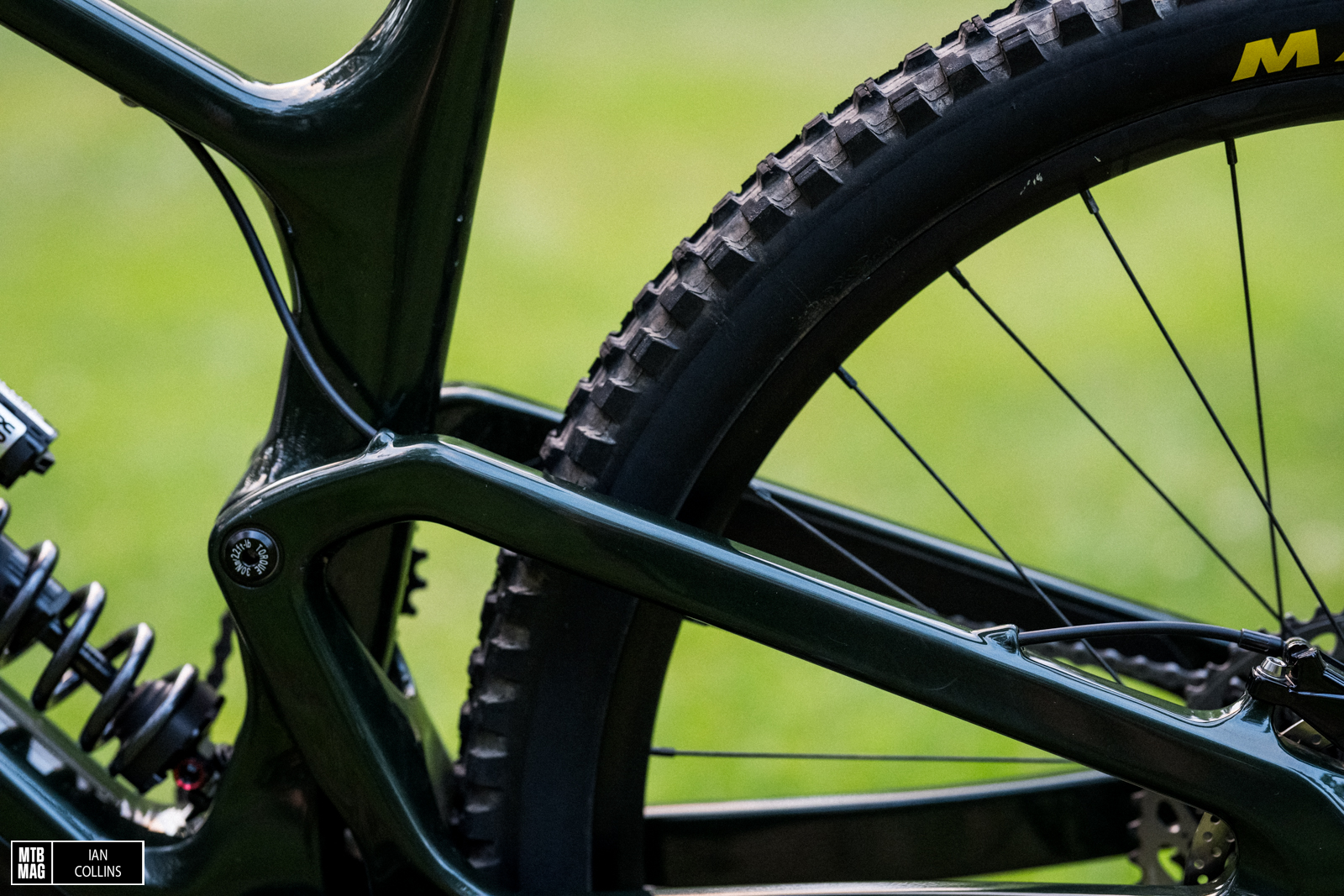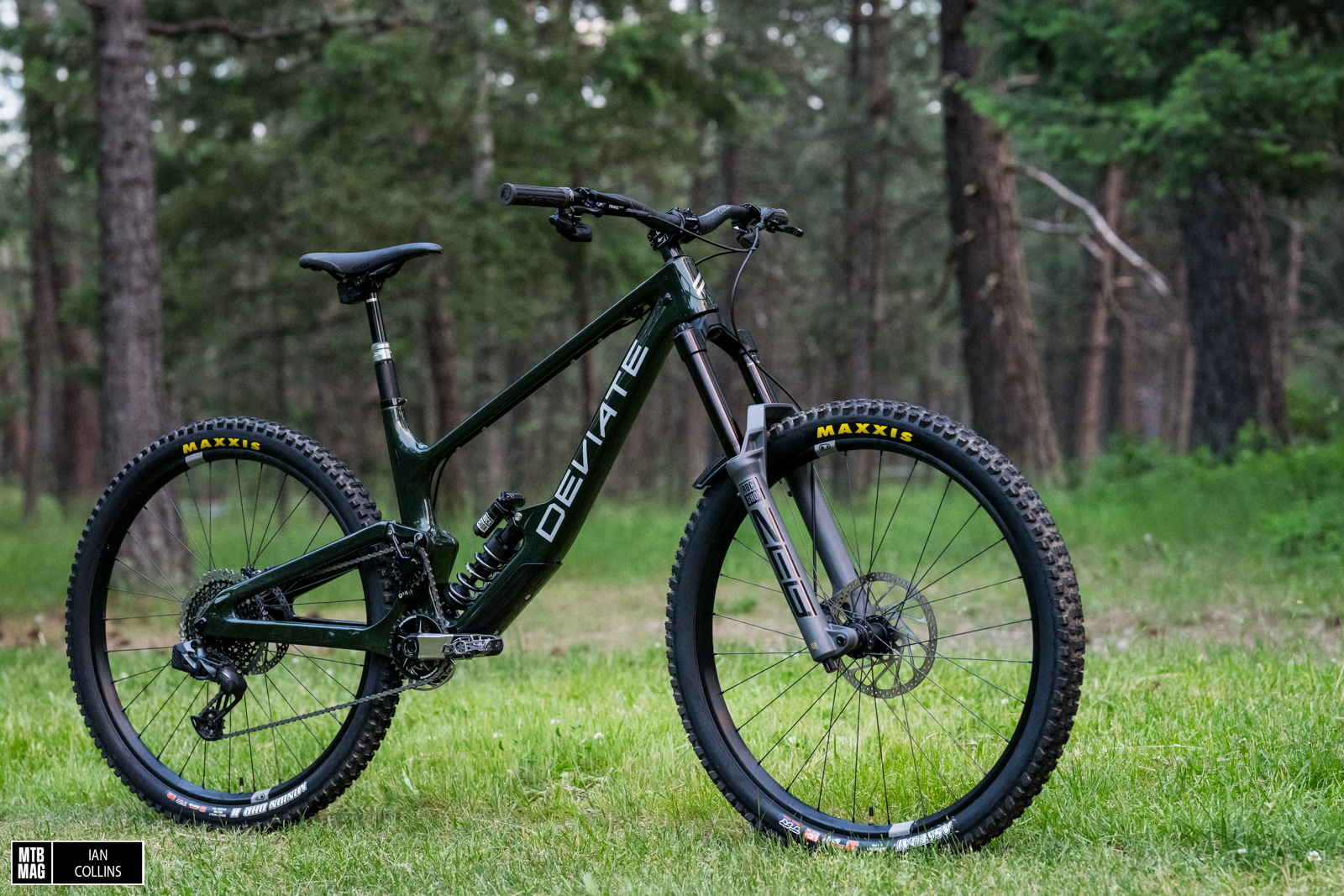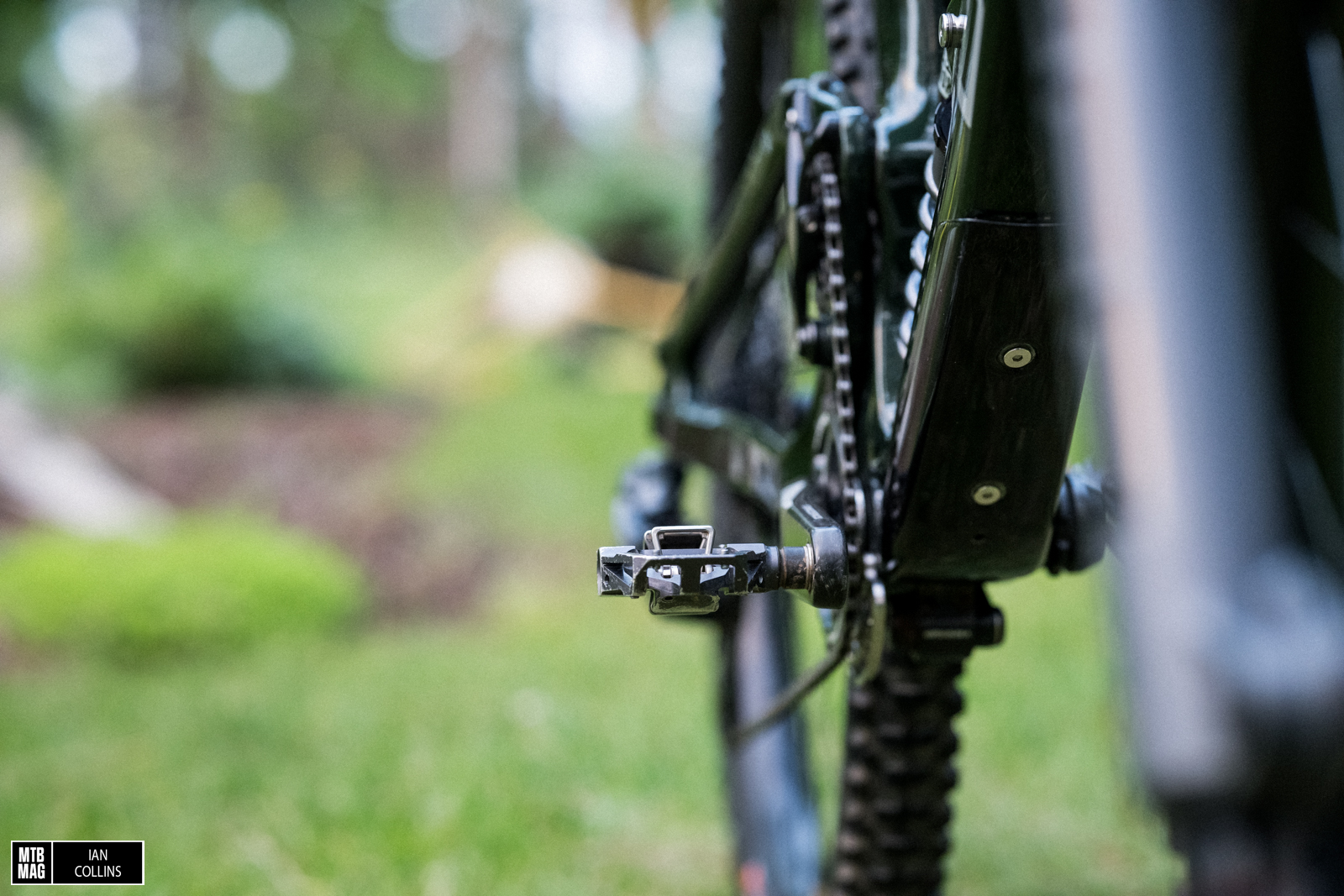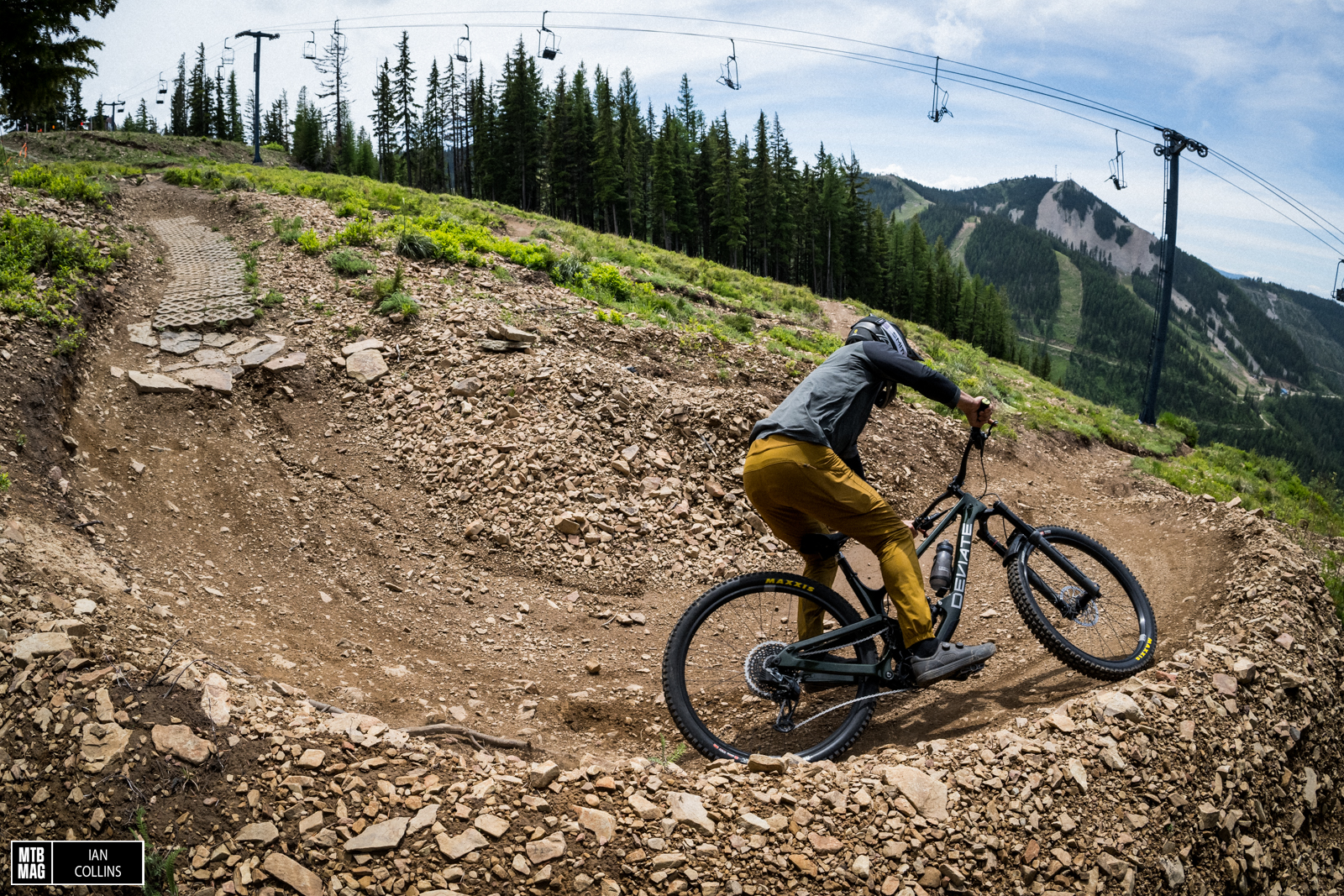[Tested] Deviate Claymore
Well before bike park season kicked off Deviate Cycles sent out their high pivot Claymore for reviewing as a frameset. Personally I like testing bikes this way as it allows me to hone in on the bike’s DNA and baked in attributes, while allowing readers to judge the value of various models independently and map them in regards to their budget. After all, the value aspect can vary wildly at different spec levels and with different frame materials. In any case, this isn’t my first time riding a high pivot bike with an idler but I do think the Claymore stands out a bit due to its highly manageable geometry, which, for how long in the tooth the bike is, allows it to be quite agile and rather efficient at getting you back up the hill. Read on for the full breakdown…
Details
- 29″ front and rear
- Carbon fiber
- 126 link chain
- 2.6″ Tire clearance
- Accessory mount
- Water bottle compatible
- Cable routing: external front triangle / internal rear
- Medium, Large (tested), Extra Large
- 170mm or 180mm (tested) front travel / 165mm rear travel
- Lifetime warranty
- $3,600 USD (no shock) / on sale for $2,880 at time of writing
Starting with the idler itself – the 18T pulley bolts mounts neatly to the frame via three 4mm allen screws and features an easily accessible grease port by way of a standard zerk fitting.
The Claymore has a bolt-on carbon fiber downtube guard that is very broad and rugged.
The bell crank style shock linkage rotates interrupts the bottom bracket shell and concentric to it. This linkage is cleverly designed so as to avoid sitting lower than the bike’s bashguard/chainguide. That means it’s also unlikely to make any direct impacts with immovable objects on trail, although it will catch some less consequential items flinging off the front wheel. One point worth going over in this area was that at the time of testing, it was hard to find a chainguide that played nice with this bike, so I simply ran a bashguard. That said, Deviate now offers their own specially designed guide for just $74, so problem solved!
The tapered head tube features press in headset cups.
The solid (read: no interruptions from pivots) rear triangle features loads of rear tire clearance. Pictured here with a 2.4″ Wide Trail tire, there is still plenty of room to spare for muck and mud. This is likely a byproduct of being designed in the Scottish Highlands, where conditions are often less than balmy.
While I’ll get into the Claymore’s on trail attributes further down, I did want to address one minor technical issue I had with it out of the gate. Early on in my testing I sheared 2 derailleur hangers on impacts so minor that I didn’t even notice them while riding. I reached out to Deviate and they notified me that they updated the hanger and sent me a couple of new ones. As you could imagine, the new reinforced version is the one pictured above on the left – sans relief. Once the new one was installed I had no more issues.
I quite liked Deviate’s super clean cable/hose routing which runs externally through the front triangle in a groove under the downtube. It’s quiet and rattle free, plus it’s a mechanic’s dream come true and it looks stealthy. Bonus points for the attachment doubling as an accessory mount toward the seat tube. I’m not really a stickler for internal routing…If a brand can pull off a clean looking, quiet external routing I’m all for it!

That said, I did have some grievances with the routing overall however. If you’re going to run things externally in the front triangle, running it internally in the rear defeats the purpose as it makes brake bleeds/swaps more difficult. Another minor grievance was that although I mainly ran a Reverb AXS wireless seatpost, when I did run a mechanical dropper, its cable wasn’t totally immune to making a little bit of noise, even with its included foam sleeve. I personally thing a minor tweak of the main cable port or the rubber grommet could solve this problem.
Geometry
A once over on the geometry numbers reveals a bike that doesn’t just go totally wild with long low and slack. Rather, a mild mannered 64.3º head angle and a 78º seat tube angle are hints that this bike will be quite agile and efficient at getting back up the hill, respectively.
On the trail
Starting out with climbing, I would rate the Claymore as absolute peak efficiency in the enduro category – certainly among bikes that I’ve tested to date. I realize that there are some factors like the minor drag from the idler and kinematics to consider in the equation, but its efficiency comes mainly from the body positioning and it is largely due to the bike’s 78º seat angle, which is the steepest I’ve ridden thus far. In regards to that figure, this was the first bike I’ve found myself *not* inching my seat rails further forward. I think that anything steeper would be counterproductive as you can start to bump your knees on your handlebars in steep uphill switchbacks. Concerning drag, I didn’t do any sort of empirical tests, but the Claymore ran very smoothly and quietly and didn’t seem to have much of an effect on things. Put it this way – it certainly didn’t feel like much of a setback at all. Lastly, as far as kinematics go, I found the rear suspension to be quite calm and thus didn’t bother reaching for the switch very often, save for the longer climbs.
Getting into the fun stuff, when pointing the bike in its preferred direction – downhill – I found a bike that is in a single word, balanced. Whereas some Enduro bikes might find find their edge in fast and loose riding via more radical geometry numbers, the Claymore’s ability to carry speed is derived more from the rearward axle path and its low center of mass. That is certainly not to say that I found this bike lacking confidence whatsoever. Rather, it means that in slower and flatter sections the Claymore’s nimbleness and agility will save energy and time, making it a very ideal race bike in my opinion. After all, there are a great many Enduro stages out there with tight, slow and awkward sections thrown in amongst the fast and raw bits. Broadly speaking, I think this bike’s greatest strength is its ability to shine so well in both areas – the handling, taken as an overall is simply incredible.
Diving into specifics, I tested the Claymore with a coil sprung RockShox Super Deluxe Ultimate RC2 with HBO. The folks at Deviate suggested the stock tune and mentioned that some people in the office were running it with great success. While I did find the bike relatively coil friendly, I was using the hydraulic bottom out cranked all the way in to avoid harshness at the end of the stroke on some of the bigger impacts. Additionally I ended up running a 525# spring, where at 82.5kg, according to Deviate’s website I should be smack dab between a 450# and 475#. I prefer things on the firm side, but that chart is worth considering with a grain of salt. Anyhow, both of these things made me curious about trying this bike with an air shock and had me thinking that it might be better suited to one due to the increased progression, but I didn’t have any major complaints with the suspension on the whole and if you’re racing, a bike that leans a little more linear is quite often a good thing as you’ve got a little more traction on deck and minor errors are more easily forgiven.
Touching on some other ride characteristics, the Claymore does exhibit a fair amount of brake squat as many high pivots typically do, and while that did contribute to it feeling settled and stable in the steeps, things did firm up a bit under heavy braking and it had a tendency to feel slightly rough in some situations. When it came to cornering, as you can imagine based on what I noted earlier regarding the Claymore’s agility, it is an absolute treat. The frame is very rigid side to side and when you push into it, it doesn’t budge. Rather it returns the energy proportionately and rockets out of turns. That’s not to say that it has a harsh layup by any means…in fact I think it’s just right. One area where this bike really shined to me was in off camber sections. To some extent I think this can be credited to the high pivot suspension but I’m sure the geometry and construction are also worth a nod as well. In any case it held a line extremely well in point and shoot sections.
As far as some of the technical features go, much of that is covered under the “Details” section, but it’s worth taking a moment to go over the quality of the construction. I found the machine work on the aluminum parts to be excellent and the hardware all very well thought out and easy to use. The frame itself is robust and very quiet, save a slight muted rattle from the dropper cable. Props to Deviate for working this bike out so it just needs one chain and thinking all of the little things through, like the accessory mount, water bottle and grease ports.
Overall
All in all I’ve very much enjoyed my time on the Claymore and found it to be a very interesting bike. I did have a couple of minor bones to pick with it (one of which – the derailleur hanger – has been sorted out), but all told it’s a very strong performer. As far as value is concerned, sadly $3,600 without a shock is not wildly out of sync for a boutique carbon fiber full suspension mountain bike frame. these days, and at the moment, the Claymore can be purchased for $2,880 USD, which is actually solid deal. The fact that it’s backed by a lifetime warranty and crash replacement policy will make it easier for some riders to wade into boutique territory. Broadly speaking I think the bike’s main standout attribute is its ability to strike such a perfect balance between capability/stability and agility. It can confidently tackle truly heinous terrain, yet when the going is more mellow or awkward and requires additional input and effort from the rider, paradoxically, the bike really shines. This can be hugely beneficial when racing and it is a difficult balancing act to pull off. I’d venture to add that the Claymore may very well do so better than most of the other bikes out there in the Enduro category, although I obviously haven’t tested them all. In that regard it’s a bit of an anomaly that’s in a league of its own, so if that sounds like your cup of tea it is absolutely worth considering…
The post [Tested] Deviate Claymore appeared first on MTB-MAG.COM.












